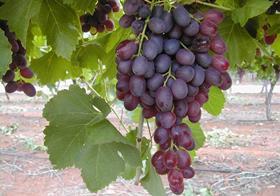
Table grapes, bananas and vegetables are among the key focus groups of a new co-operative research deal between Australia and India.
The A$6m (US$4.5m) agreement between research and development corporation, Horticulture Innovation Australia (Hort innovation), and the Indian Government was sealed under the terms of a memorandum of understanding (MoU) earlier this week.
The deal will see Hort Innovation and the Biotechnology Research Assistance Council (BIRAC) seek to invest a combined A$2m (US$1.5m) in research projects each year over the next three years.
Hort Innovation chief executive John Lloyd said the MoU outlined a joint commitment to conduct research into strengthening both nations’ horticulture products.
“In recent years, advancements in plant biology research have increased exponentially with state-of-the-art technologies teaching us more about how to improve our crops to get larger, higher quality yields,” Llyod said.
“We are going to work with BIRAC, and key research providers both in Australia and India, to take that research to the next level. The aim is to bring our growers practical tools to streamline their approaches to areas such as advanced breeding, pest and disease management and biosecurity protocols.”
Lloyd said the research will aim to bolster apple, banana, mango, table grape and vegetable crops, however, the intelligence gained will likely trickle down to other areas of horticulture. The research is likely to include studies into plant genomics, marker-assisted breeding, new cultivar development, tree architecture and orchard density research.
“To say we are excited by this research MoU is an understatement,” Mr Lloyd said. “India is one of the world’s biggest horticulture producers, and its commitment to agriculture technology is second to none.”
Currently, Hort Innovation, the Australian Government and the Indian Government are working together to scope the research strategy. Lloyd said Hort Innovation will be calling for expressions of interest from potential research partners and co-investors later this year.






No comments yet